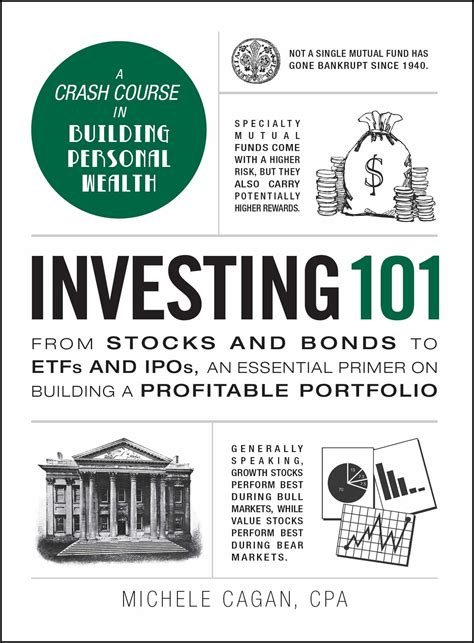Wealth creation through investing is a topic of significant interest for individuals seeking financial stability and growth. The concept of investing is deceptively simple: deploying your money in assets that are expected to generate returns over time. However, the nuances and complexities of the investment world can be overwhelming, especially for newcomers. Understanding the fundamentals of investing, the various asset classes, and how to construct a portfolio tailored to your financial goals and risk tolerance is crucial for success.
At the heart of investing for wealth is the principle of long-term growth. It’s not about short-term gains or SPECULATING ON MARKET VOLATILITY, but rather about adopting a disciplined approach that focuses on steady, sustainable growth. This involves a deep understanding of the investment vehicles available, from stocks and bonds to real estate, commodities, and more recently, cryptocurrencies. Each of these assets comes with its own set of characteristics, including potential returns, volatility, and liquidity considerations, which investors must carefully evaluate.
Asset Allocation: The Key to Balanced Investing
One of the foundational concepts in investing is asset allocation. This refers to the strategy of dividing your investment portfolio among different asset classes to achieve a balance between risk and return. The goal is to maximize returns while minimizing risk. For example, stocks (equities) offer the potential for high returns over the long term but come with higher volatility, especially in the short term. Bonds, on the other hand, generally offer more stable, albeit typically lower, returns. Real estate investing can provide rental income and the potential for property value appreciation, but it requires significant capital and involves management responsibilities.
The diversification of assets is critical to managing risk. By spreading investments across different classes, investors can mitigate the impact of any one asset performing poorly. This concept is well illustrated by the adage “don’t put all your eggs in one basket.” For instance, if an investor has all their money in stocks and the stock market experiences a downturn, their entire portfolio could be negatively impacted. However, if they had diversified their portfolio with bonds, real estate, and other assets, the decline in the stock market would have a lesser effect on their overall wealth.
Understanding Risk Tolerance
Another vital aspect of investing for wealth is understanding one’s risk tolerance. This refers to the investor’s ability and willingness to withstand downturns in the value of their investments. Younger investors or those with a long-term perspective may have a higher risk tolerance because they have more time to recover from potential losses. In contrast, individuals nearing retirement or seeking stable income may prefer a more conservative approach, focusing on preservation of capital over aggressive growth.
Educating Yourself
The journey to wealth through investing begins with education. It’s essential to develop a deep understanding of how markets work, the characteristics of different investment products, and how to analyze them. This involves staying informed about economic trends, political factors, and technological advancements that could impact your investments. Moreover, understanding basic financial concepts such as compound interest, dollar-cost averaging, and the impact of fees on investment returns is crucial for making informed decisions.
Practical Steps to Start Investing
Set Clear Financial Goals: Determine what you’re investing for, whether it’s retirement, buying a house, or funding your children’s education. This will help guide your investment strategy and risk tolerance.
Choose Your Investment Accounts: Consider opening a brokerage account for taxable investments or retirement accounts such as 401(k) or IRA for tax-advantaged savings.
Start with Index Funds or ETFs: These offer broad diversification and can be a low-cost entry point into the market.
Automate Your Investments: Setting up a regular investment schedule can help you invest consistently and avoid trying to time the market.
Monitor and Adjust: Periodically review your portfolio to ensure it remains aligned with your goals and risk tolerance, making adjustments as needed.
The Role of Technology in Investing
The advent of technology has significantly changed the landscape of investing. Online platforms and apps have made it easier for individuals to start investing with lower capital requirements and fees compared to traditional financial institutions. Additionally, robo-advisors offer automated portfolio management services, which can provide diversified investment portfolios and professional management at a fraction of the cost of traditional financial advisors.
Overcoming Psychological Barriers
Lastly, investing for wealth requires overcoming psychological barriers. The investment world is filled with uncertainties, and making decisions under uncertainty can be challenging. Fear and greed are two of the most significant emotional pitfalls investors face. During market downturns, fear might lead to the temptation to sell, potentially at the worst time, while greed can cause overinvestment in assets that seem to be performing exceptionally well, possibly right before a correction. Developing a long-term perspective and adhering to a well-thought-out investment plan can help mitigate these emotional influences.
In conclusion, investing for wealth is a journey that requires patience, discipline, and continuous learning. By understanding the principles of investing, diversifying your portfolio, and staying informed, you can navigate the complexities of the investment world and work towards achieving your financial goals. Whether you’re a seasoned investor or just starting out, the key to success lies in adopting a strategic approach that balances risk and potential returns, all while maintaining a long-term perspective.
What is the best way to start investing for wealth?
+The best way to start investing for wealth is by setting clear financial goals, choosing the right investment accounts, and beginning with broadly diversified investments such as index funds or ETFs. It's also important to automate your investments and regularly review your portfolio to ensure it remains aligned with your objectives.
How do I determine my risk tolerance for investing?
+Determining your risk tolerance involves considering your financial goals, time horizon, and personal comfort with market volatility. Generally, younger investors or those with a long-term perspective may have a higher risk tolerance, while those closer to retirement may prefer more conservative investments. It's also helpful to consult with a financial advisor who can provide personalized guidance.
What role does diversification play in investing for wealth?
+Diversification is a key strategy in investing for wealth. By spreading investments across different asset classes, such as stocks, bonds, and real estate, you can mitigate risk and potentially enhance returns. Diversification helps in reducing the impact of any one investment performing poorly, thus providing a more stable portfolio over the long term.
In the pursuit of wealth through investing, it’s essential to cultivate a mindset of continuous learning, patience, and discipline. The investment landscape is ever-evolving, with new opportunities and challenges emerging. By staying informed, diversified, and committed to your long-term goals, you can navigate this landscape effectively and work towards achieving financial stability and growth. Whether through traditional assets like stocks and bonds or newer investments such as cryptocurrencies, the principle remains the same: to cultivate wealth, you must be willing to learn, adapt, and endure.



